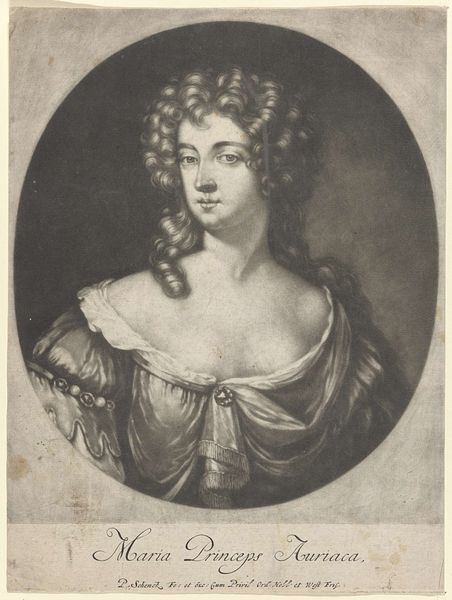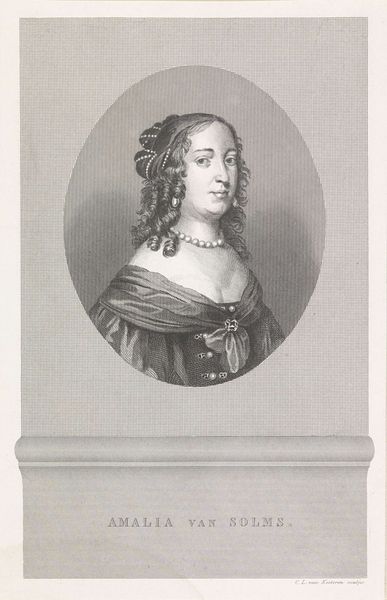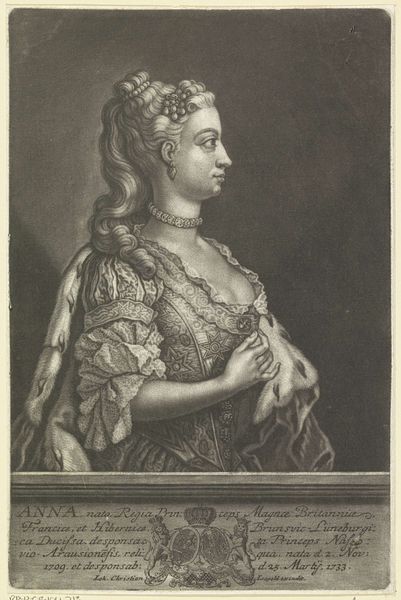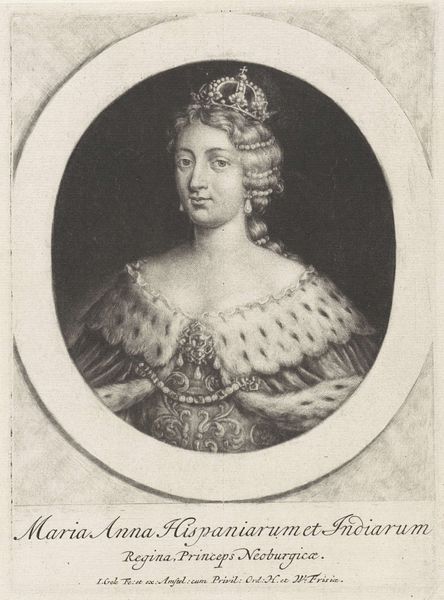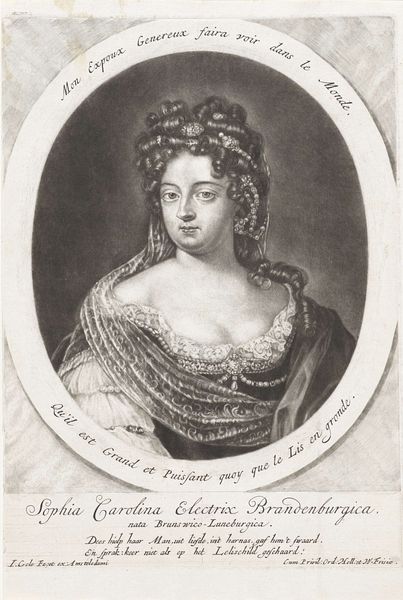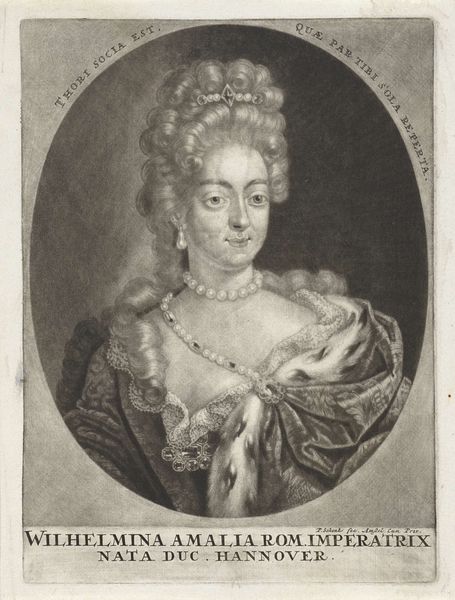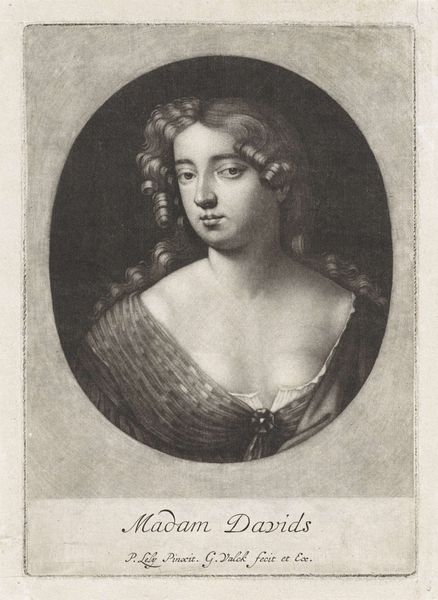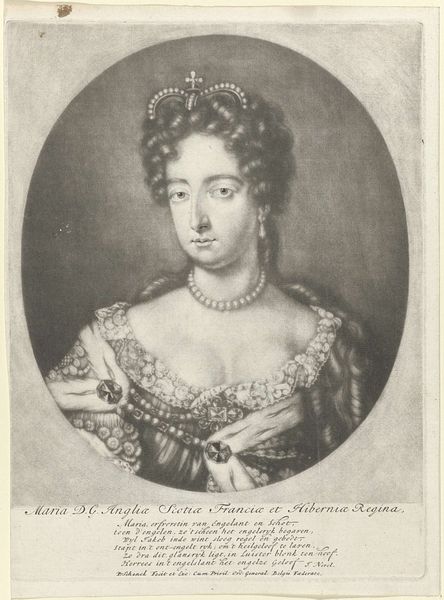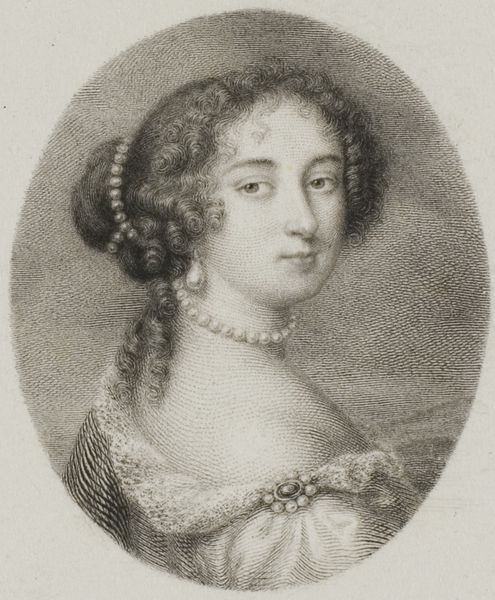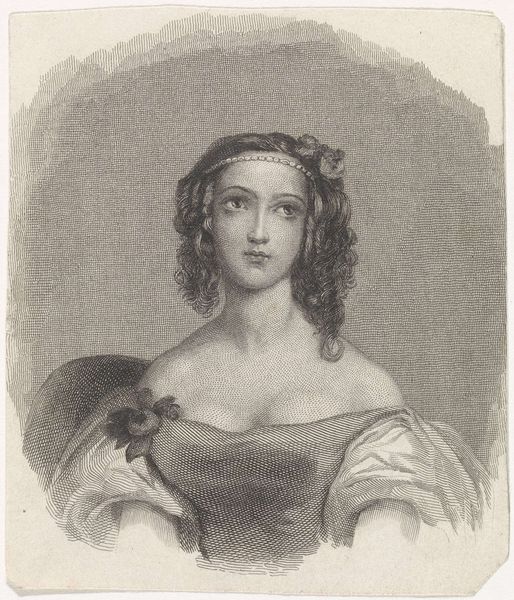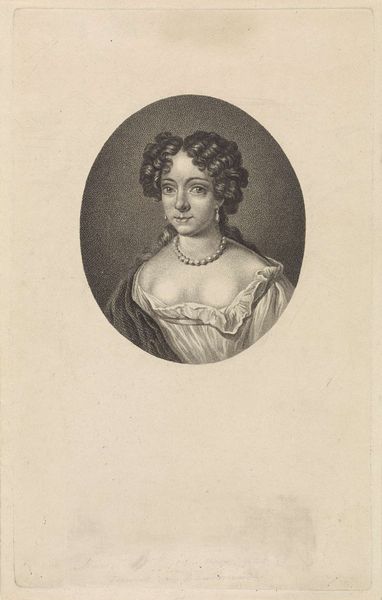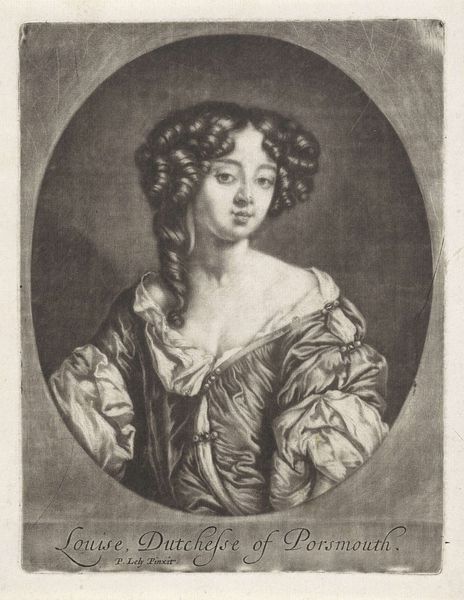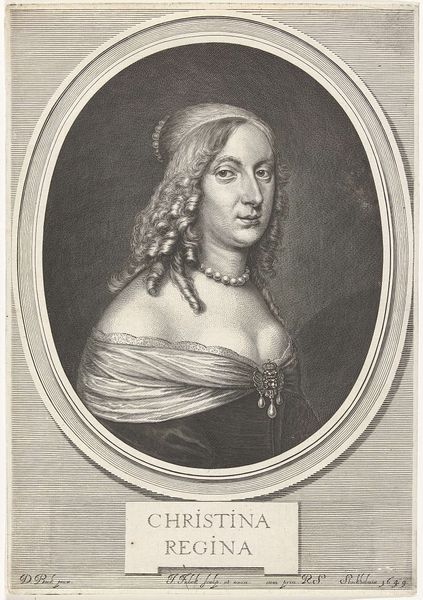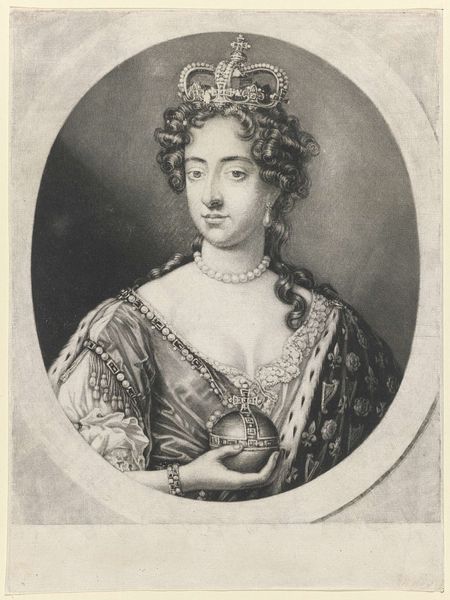
drawing, print, pen, engraving
#
portrait
#
drawing
#
baroque
# print
#
charcoal drawing
#
pen
#
portrait drawing
#
engraving
#
portrait art
Dimensions: height 209 mm, width 153 mm
Copyright: Rijks Museum: Open Domain
Editor: Here we have Gerard Valck’s portrait of Barbara Villiers, Duchess of Cleveland, dating from sometime between 1662 and 1726. It’s a print, using engraving, pen and charcoal drawing techniques. I’m immediately struck by the slightly melancholic gaze and elaborate curls. How would you interpret this work? Curator: Well, this portrait needs to be seen in the context of the Restoration court. Barbara Villiers was one of the most notorious and influential mistresses of Charles II. A portrait like this wasn't just a representation; it was a statement about power, sexuality, and social status. It's a carefully constructed image designed to project a specific persona to the public. Editor: So, beyond just being a portrait, it’s a form of…propaganda, almost? Curator: Exactly! Consider the setting – presumably luxurious, though the details are sparse. The pearl necklace and elaborate gown signify wealth and taste. The artist, Gerard Valck, would have been very aware that he was contributing to the Duchess's carefully curated public image. And the wide circulation of prints like these allowed that image to be disseminated widely. To whom do you think this imagery was primarily directed? Editor: I suppose, other nobles, maybe? Those who were concerned with courtly life and status? Curator: Precisely. But also, the broader public, creating a fascination and perhaps envy, which further solidified Villiers' position. The politics of imagery played a huge role in shaping perceptions of power and legitimacy during this era. Editor: It’s amazing to think of a portrait functioning in so many ways beyond just capturing someone’s likeness. I’ll never look at portraits the same way. Curator: It's a lens into the social and political theater of the time. Next time, consider who commissioned the work, who was its intended audience, and what message it was designed to convey.
Comments
No comments
Be the first to comment and join the conversation on the ultimate creative platform.
